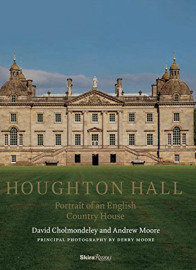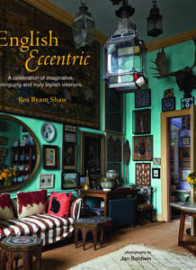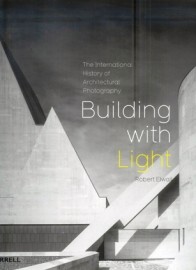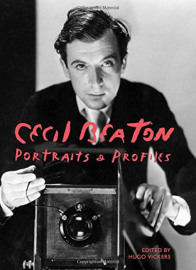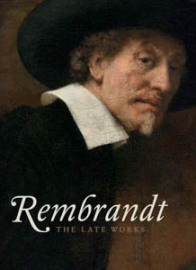Anthropocene: the Age of Man
It was in a light bulb moment in 2000 that Nobel prize-winning chemist Paul Crutzen convincingly argued that we are now living in a new geological epoch, by demonstrating the extraordinary dominance of mankind over Earth’s biological, chemical and geological processes. Up until then the consensus had been that we were still living in the unusually stable epoch of the Holocene – that began around 10,000 years ago. Crutzen’s Earth shatteringly perceptive view is that the Holocene is over, and we now inhabit the Anthropocene: the age of man.
The real history of our planet is written not in books or digitaly but in the deep time of rock – everything else is simply passing through. Any curious intergalactic geologist of the future finding themselves on this little planet will notice four major events in the time scale of Earth that have shaped life on the planet.
The first is the impact of tiny cyanobacteria which began a process about 2.3 billion years ago on which almost all life now depends: photosynthesis, the conversion of sunlight into energy.
The second was the Cambrian explosion of some 500 million years ago when complex life – animal, plant and fungus – exuberantly burst onto the planet.
The third was the crashing into the Earth of a 10 mile wide lump of rock about 65 million years ago travelling at 20 miles a second. The impact resulted in a dust cloud that blotted out the sun and killed 75% of all life.
But it is the fourth event which will most intrigue our intrepid geologist. He will notice that one particular life form, the human ape has within a startlingly short period of time had a disproportionate effect on life on the planet – mostly negative. Although we humans in our current form have existed for only 200,000 years on a planet that is four and a half billion years old – blink and you’ve missed it – we have caused mass extinction, changed the composition of the atmosphere, changed land use, and changed the water cycle. We are quite simply the single most dynamic geological force that has ever occurred on this planet.
What is truly extraordinary is not only the depth of the changes but also the speed. The Permian era 245 million years ago for example, was characterised by extreme volcanic activity, but didn’t put up as much carbon in the atmosphere as we have done and at 10 to 100 times the speed. Similarly there have been hotter periods, for example the Jurassic when there were rain forests rather than ice on the poles, but what was happening over millions of years is now happening in about 50. And our impact will undoubtedly outlast us. Carbon remains in the atmosphere longer than nuclear waste remains radioactive. Our decades long activities may last a billion years. Of course the rock record for this event is not yet written and unlike cyanobacteria, we humans as an ingenious and intelligent species, may still have the opportunity and even find the will to modify our impact before it destroys us and our fellow life forms, over which we are the responsible stewards.
Award winning science and environmental journalist Christian Schwägerl introduces his new book “The Anthropocene: The Human Era and How it Shapes our Planet” to GDC Interiors Journal. Schwägerl is inspired by Paul Crutzen’s idea and investigates what it means to live in the Anthropocene by visiting the last remaining pristine places, the rising megacities, the devastated coral reefs and disappearing forests. His eloquently written and comprehensive overview of our planetary state offers both realistic solutions and shares his vision of a world that balances ecological sustainability, economic prosperity, political justice and cultural vibrancy.
ANTHROPOCENE – On the Substance of a New Idea
By Christian Schwägerl, Berlin
In February 2000 Paul J. Crutzen erupted at a scientific conference in Mexico. Five years previously the Dutch-born atmospheric chemist had been awarded the Nobel Prize for being one of the first to recognise and investigate the dangers to the protective shell around the earth. Crutzen’s findings were a vital contribution to the international prohibition of the most harmful of these gases in 1988 and to enabling the ozone layer to slowly regenerate in the period of time since.
Throughout his whole career Crutzen had gathered materials showing how man has changed, influenced and damaged the earth – often, as the case with the ozone layer, not even with malicious intention, but rather from pure ignorance.
And now, attending a symposium on the International Geo-Spheres and Bio-Spheres, he was listening to one lecture after the next in which the present period was being vaguely described as the ‘Holocene’, as geologists call the period in earth’s history since the last ice age nearly 12,000 years ago. The Nobel Prize winner’s dissatisfaction with this word grew steadily until finally he stood up to interrupt the speaker:
‘We no longer live in the Holocene,’ Crutzen declared gruffly. ‘We live in the, in the, in the… Anthropocene.’
Paul J. Crutzen
In Greek ‘Anthropos’ means human being as such, the final syllable ‘-cene’ deriving from the word for ‘new’: ‘That which is new that [came into] the world with mankind’ could be a translation for ‘Anthropocene’. In geology ‘cene’ describes the earth’s epochs, i.e. important sub-chapters in the 4.6 billion year long history of the mineral planet and its inhabitants. ‘The earth’s epoch of mankind’ is thus another possible translation: the period in which humans have become the dominant power in changing the earth. Crutzen’s small outburst created a stir in that specialised world, though the new word was barely noticed outside of the geologists’ scene. But recently that has changed. The idea of the Anthropocene meantime engages politicians, artists, ecologists, as it does humanities scholars and ethicists.
Ban Ki-Moon, General Secretary of the United Nations, opened the last Rio environmental summit with the words, ‘Welcome to the Anthopocene’. The Berlin ‘House of World Cultures’ has received funding from the German Federal Parliament for a three-year international project to explore the idea jointly with the Max Planck Society and the Deutsche Museum. The Smithsonian in Washington is likewise occupied with the Anthropocene, likewise Britain’s Royal Society. Most important of all is probably the work of the ‘Anthropocene Working Group’. This pool of scientists has the task of casting a vote in 2016 as to whether the earth’s epoch in which we currently live should be officially renamed. Astonishingly, Crutzen’s spontaneous intervention has developed into a universal idea that has found attention worldwide and could even become the generic scientific term for all of mankind’s activities.
Primarily it concerns no more than a geological hypothesis: mankind has changed the planet not only in a global, but also in a far-reaching and long-term sense, to the point that this will remain recognisable even in the far-off future. So it is not merely scratches in the earth’s system that we leave behind, but changes in how it functions. Even if mankind disappeared from earth tomorrow, interested visitors in 100,000 or even several million years could still see that we have been here. Just as geologists today investigate the shells of extinct ammonites or new kinds of rock strata as ‘markers’ of earlier impacts on earth’s history, so in this imagined future there would be indications of the ‘epoch of mankind’ in stubborn techno-fossils, new types of substances, globally altered distribution patterns of animals and plants, and in the bones and pollen grains of bred life-forms as well as in such artefacts as cities.
The hard pieces of evidence are numerous: thus the CO2 emissions, which have constantly grown since the onset of industrialisation, are sufficient to change the world’s climate for tens of thousands of years, turning the seas so acidic that many algae and corals can no longer live in them. The Haber-Bosch process means that mankind, in the production of fertilisers, has already extracted more nitrogen from the air and introduced it into eco-systems than was there naturally – with massively negative consequences for biodiversity. Globally, forests and savannas are ploughed up so as to produce food for man. Between 2000 and 2012 alone, a surface area of forest measuring 1.100 by 1.100 kilometres was cut down, mainly to make room for soya and oil palm plantations. Taken together, global agricultural areas are as large as South America. While man and his livestock made up only a few percent of the biomass of larger animals at the end of the last ice age, today it comprises 97 percent. Wild animals make up just 3 percent when put on the scales. Accelerated consumerism has resulted in metals and minerals disappearing in certain places due to mining, and reappearing in other places in new material combinations, for example as heaps of electronic scrap.
Underwater Sculpture by Jason deCaires Taylor submerged off the coast of Cancun, Mexico Photo: Jason de Caires Taylor
To this can be added numerous other long-term ‘markers’, measurable or visible, of the Anthropocene: for example, the artificial radioactive elements that have entered the world since 1945 as a result of atomic bomb explosions and the use of nuclear power; the vast amount of dumped plastic that could wrap the whole world once over in plastic film; and the millions of various synthetic chemicals that have spread and accumulated around the earth’s system. Radio nuclides and plastic are at present considered the clearest measurable signal as to why the official dawn of the Anthropocene should probably be dated at 1945.
Measured by this hard evidence, the Anthropocene sounds like something that should in fact be combated. As a summation of all our environmental problems it rather resembles a terrifying vision. Or does it, even worse, legitimise yet more destruction of the environment? Critics assert that the word ‘Anthropocene’ sounds like ‘Anthropocentrism’. Is that perhaps supposed to be the idea of the Anthoropocene: that earth belongs to mankind, that he has the right to submit it to his technology and capitalistic logic, to exploit and rebuild it according to his needs, and to make subjects of animals, plants and living spaces, not only in a metaphorical but a real sense, right down to the very last corner? So that if something goes wrong, he can react to it with such large-scale technology as genetic engineering and artificial cooling gases? Or, given that anthropos, that the human being as such is named as the responsible party, should one then blur the fact that massive differences exist in terms of blame for planetary problems between a small farmer in India and the CEO of an oil conglomerate?
Such negative readings crop up repeatedly in the current debate – and I too consider it very important critically to examine, to sound out a word that in future could be given world-wide validity. Yet there are many other ways of reading it, some with very much a positive message to them.
• To speak of the Anthropocene means to integrate human history into that of the earth and of nature. We no longer see ourselves as a power coming from without, as it were supernatural, but rather we recognise our origins from the earth’s crust and our interconnectedness with all other forms in which nature manifests itself.
• In an era in which billions are shifted around the world in nano-seconds, and companies, like governments, make decisions looking no more than a few months ahead, the Anthropocene idea creates the sense of a long past, and above all a long future.
• By shifting the focus on to the far-off future, our sensors for the long-term consequences of our actions become heightened. Globalisation having broken down borders in spatial terms, and the internet having created a worldwide network, on the positive side the potential now arises for coordinated movements against destructive business activity, and linking up with future inhabitants of earth.
• The ideological basis of ruthless business – namely that there is a clear border between ecology and economy, between culture and nature, and that what we call ‘environment’ is an external, economically worthless factor – are refuted by the Anthropocene concept: nature appears as the primary economy of earth; to its borders we must adapt.
• The powerful dimension hidden in a new earth epoch expresses how momentous the decisions we make today are – from individual purchasing decisions, which in their accumulated form either help or damage rain forests and coral reefs, to far-reaching decisions reached by individual heads of companies and governments. That could heighten one’s sense of responsibility.
• While power and wealth today are concentrated in the hands of an ever smaller group – one percent of the world’s population owns as much as the rest, with just 80 billionaires disposing of as much money as 3,5 billion of the world’s poorest – every person, by virtue of the word ‘anthropos’, is called upon to decide the future as equals, including small farmers and indigenous people.
• The Anthropocene concept does not grant humans any additional rights, but rather can open our eyes to our multifarious interconnectedness with all abiotic and biotic powers on earth, with stones and living creatures. Instead of promoting anthropocentric thinking, it could accelerate our cultural embedment into earth.
• By removing the illusion of a ‘great out there’ which we can help ourselves to and into which we can dump all our rubbish, the Anthropocene idea creates a new imperative: to design cities, agriculture, fishing, technology and production in such a way that they enrich rather than impoverish the biospheres.
Those are some of the possibilities that are uniquely expressed by this new word. Exactly how the Anthropocene will proceed is not laid down in any canon; there is no master plan nor ideology. It is an open-source concept that everyone familiar with geophysical basics can get involved in. Ultimately the Anthropocene is the sum and multiplication of all that humans, whether communally or profoundly differently, think, feel, decide, carry out, how they co-habit with the diversity of earth’s non-human inhabitants – and above all, too, how that which we have hitherto called the ‘environment’ reacts, responds, acts in the face of what humans do.
Anthropocene (2011) Underwater sculpture by Jason deCaires Taylor submerged off the coast of Cancun, Mexico
When I once accompanied Paul J. Crutzen to a conference, on the way there he said to me in that characteristic mix of humility and brilliance: ‘What the Anthropocene is precisely I don’t know.’ How the ‘human epoch’ will proceed depends on collective action, on social movements and economic, power-based decisions. The fact that the consciousness of one species can have such profound impact on earth is something new in the history of nature. Jürgen Renn from the Max Planck Institute for the History of Science describes it as follows: ‘The Anthropocene is a process that reflects upon itself.’
Christian Schwägerl, born in 1968, works as a journalist, writer and biologist in Berlin. His book on the Anthropocene ‘Menschenzeit’ (Riemann, 2010) inspired the ‘Anthropocene Project’ at the House of World Cultures in Berlin and the special exhibition titled ‘Welcome to the Anthropocene’ on show until mid-2016 at the Deutsches Museum in Munich. ‘Menschenzeit’ was recently published in English with the title ‘The Anthropocene – the human era and how it shapes our planet’ by Synergetic Press. Other books by Christian Schwägerl are ‘11 drohende Kriege’ (2012) and ‘Die analoge Revolution’ (2014). The author writes as a freelancer for GEO, FAZ, Cicero and other media. In addition, he runs the master class ‘The Future of Science Journalism’ at the Bosch Foundation.
The Anthropocene: The Human Era and How it Shapes our Planet by Christian Schwagerl published by Synergetic Press
Award-winning science and environmental journalist Christian Schwägerl has for two decades researched how humans, nature, and technology interact. Schwägerl as been inspired by the ideas of Nobel Prize-winning chemist Paul Crutzen who famously coined the word Anthropocene to describe our epoch of extraordinary human dominance. This comprehensive overview of our planetary situation and outlook also presents tangible solutions to our global crises.

















